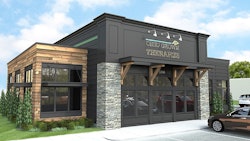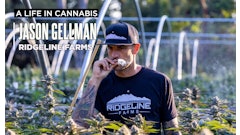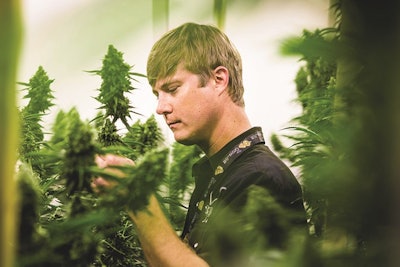

The Farm is Boulder’s best recreational dispensary, at least according to Boulder Weekly’s “Best of Boulder,” which has ranked The Farm as the city’s top marijuana shop every year since 2015. Having a caring, attentive staff and a clean, safe environment can (and does) help create loyal dispensary customers and generate positive press; but at the end of the day, product quality is what ultimately keeps people from seeking greener pastures.
This fact is not lost on The Farm, which is why the vertically integrated craft cannabis company chooses to grow its own flower and goes to great lengths to ensure it is producing exceptional cannabis. The Farm uses multiple small bloom rooms, keeps growers assigned to the same rooms throughout the entire flower cycle, applies only organic pesticides and fungicides, and treats drying and curing as an art form.
Head of Cultivation John Billings oversees the company’s two 10,000-square-foot indoor grow facilities. He spoke with Cannabis Business Times about The Farm’s hybrid hydroponic growing techniques, how not being able to label products “organic” hurts marketing efforts, the ways in which the dispensary and grow cooperate, and much more in this quick look behind the scenes at The Farm.
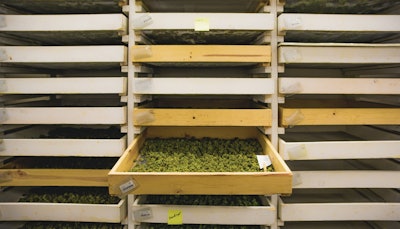
Scott Guthrie: You use a hybrid hydroponic growing technique you call “Craft Coco.” Can you describe what that consists of?
John Billings: We grow in [Royal Gold] Tupur, which is ground coconut husk with forest humus mixed in, and it is a very simple mix—it's already premixed. We like this mixture because it allows for frequent watering feedings, increases the oxygen flow around the rhizosphere (the region of soil in the vicinity of plant roots in which the chemistry and microbiology is influenced by their growth, respiration and nutrient exchange), and a more complex flavor profile to the end product.
Guthrie: What drove The Farm to select its current facilities?
Billings: Due to the local regulations at the time, a cannabis grow facility couldn't be over 10,000 square feet. This is the reason for having two 10,000-square-[foot] facilities next to one another. That said, we didn't have the funds to construct the buildings from scratch; therefore, we were forced to find space for lease. It's hard because the facility can't have a bank loan. Most banks don't allow landlords to rent to the cannabis industry because cannabis is federally illegal. Also, we wanted the facility, ideally, to be freestanding with no other tenants due to possible smell penetration in adjacent units. We found this facility, which is owned outright by the landlord, is freestanding, and it was the size needed to supply pretty much 100 percent of our flower that we sell at The Farm, thus satisfying all our criteria.
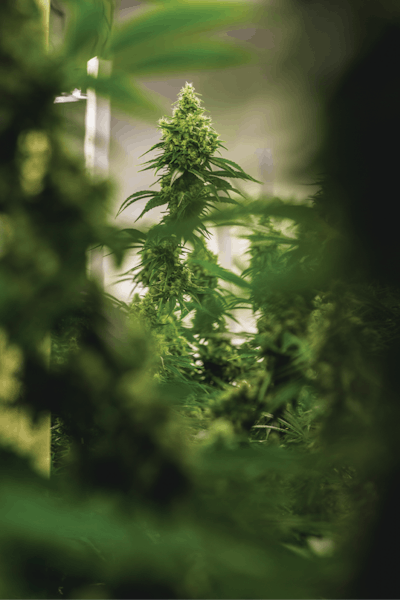
Guthrie: Can you provide a few details about the facilities—such as how many and what size bloom rooms you have, and how many plants they can hold?
Billings: With any design, it definitely takes some creativity, and you have to forecast for the future. The amount of bloom rooms was determined by a ratio of bloom to vegetative and mother stock grow space, and trying to section that out appropriately. Along with that, there were optimal efficiencies such as labor, utility usage and growth cycle length scheduling that went into consideration. If you are strict about a nine-week growth cycle, which is pretty much what it takes [to complete the flowering cycle], and [you want an additional] week for harvest, you would build a facility with 10 rooms.
This facility—although split into two sides—acts as one, and it has eight bloom rooms—four on each side. Having eight rooms gives us the flexibility with some strains needing shorter and longer growth cycles to grow each strain to its optimal state of maturity. But having multiple rooms also allows for full-time employment of a specifically designated crew. We have an entire team designated to the grow department. We also have a whole crew that is just the harvest department that assures that the product is handled with care.
Our rooms are, on average, about 700 square feet and hold around 130 plants. There are many factors that decide the actual plant count in these grow rooms. Some of these factors might be type of strain, growth pattern, size of plants in relation to growth cycle. Other factors might be environmental controls, lighting needs of the strains and even nutrients, or a combination.
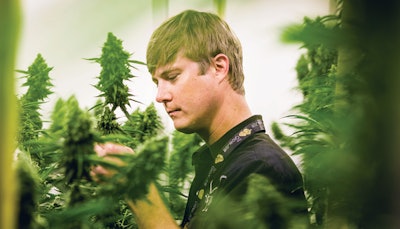
Guthrie: You try to have the same growers care for the same grow rooms for the entire eight- to 10-week flower cycle. What was behind that decision, and does it make staffing or scheduling more difficult for your team?
Billings: Having just a grow department and just a few people designated to certain sides of the facility or certain rooms actually makes staffing easier because growers are designated to certain rooms and areas, and that allows for more consistent overall care for each batch that we grow.
Also, we try to keep the same strains in each room, and this allows for that grower to know how each strain grows and what the plant likes or doesn't like, and identify issues quicker.
Since opening operations, all our cultivation department does is cultivate. We have been working together for years. I've worked with some of these guys six, eight, going on nine years. This has allowed for us to grow together (figuratively and literally) and help each other not lose sight of our craft and our culture. We all carry a great amount of passion for what we do. Scheduling is not an issue when you have the level of dedication that we have created here.
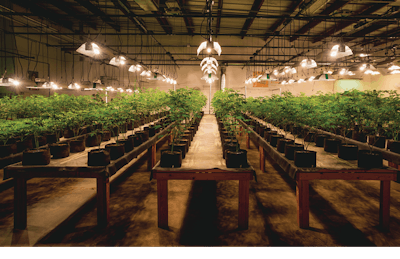
Guthrie: You implement organic pest control and are using organic and biological fungicides and pesticides. Can you describe some of your organic methods?
Billings: The use of organic pesticides and biocontrols, which are predator insects—they're also referred to as "bene bugs" or beneficial insects—that's the vital core of our integrated pest management, or IPM. By following a strict IPM regimen, we've greatly reduced the number of pathogens and issues in our cultivation facilities.
Guthrie: The Farm subscribes to the notion that simply having standard operating procedures (SOPs) is not enough to produce great cannabis. What does this mean, and what should supplement those SOPs to help ensure great crops?
Billings: Having SOPs is great, but if you do not have the personnel that can execute these practices, they're useless. So, it starts with the personnel because growing cannabis is a craft, and each strain is unique and requires skill to grow it well. Once you have the personnel, the SOPs help with growing each strain well and consistently every time, so you have that level of consistency that is apparent.
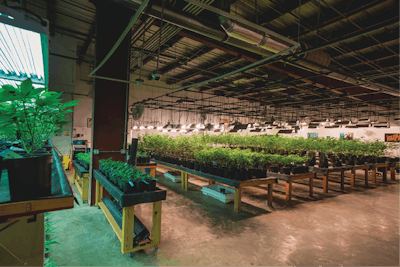
Guthrie: The Farm views drying and curing cannabis as an art form. What are some of the techniques The Farm employs during this process?
Billings: All our flowers are dried and cured in a specifically designed temperature- and humidity-controlled room. First, the plant is dried. Once dried, the flower is placed into curing containers where it will slowly be breathed (by allowing air to enter the containers for brief periods throughout the day) for four to six weeks, which is the measurement of “slow cured.” Once cured, the flower is packed into sealed bags until shipped to the store. Each strain cures until both smell and moisture levels reach standards set internally. These are documented practices that have been created over time through experience with quality and compliance in mind to help produce only the best cured flower possible. We do use a moisture meter to ensure accuracy. We take this step seriously and believe it is one of the main reasons for our product’s quality.
Guthrie: The Farm operates a dispensary in Boulder. Do you use dispensary metrics to influence or dictate cultivation decisions? Are you also tracking genetics and their performance?
Billings: Sales drive cultivation here at The Farm. From a grower's standpoint, it sure would be easier just to grow what we want, but what we think everybody wants, really isn't what everybody wants. We've had that free rein before in the past, and it doesn't work like that. At The Farm, about every eight weeks the menu changes because of rotational strain production. The mainstays—Alpha Blue, Super Lemon Haze, Starfighter and Ghost Trainwreck Haze 9— stay on the menu, and new alternate strains are available for purchase. Based on sales, these rotational strains can become mainstays. The mainstays are where the demand is. The mainstays are our most popular and what we grow the most of. So, The Farm’s flower menu is used to create a production plan. The production plan designates strains to a specific room and a specific number of tables.
We started that a few years ago. We started really paying attention to sales at the retail location, getting feedback and eliminating low yielders and low-sellers. We started really focusing on what the consumer wants, and that's where we've found greater success.
For genetics or strains, our main data points are yield, potency, issue history and sale. They're all related in some way. For instance, if a strain yields high, but has a low potency, it will most likely have poor sales. Another example would be if sales are great, but the yield is low, that will most likely have a high cost to grow, so we wouldn't do that.
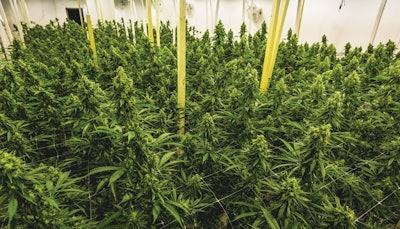
Guthrie: The Farm prides itself on being a craft cannabis producer. As the market matures and consolidates, where do you see craft producers fitting into the industry in the future?
Billings: It's kind of like craft beer; I think there will always be a place for small-batch cannabis.
The market will inevitably evolve, as all markets do, and depending on the direction the federal government takes, as well as big players like Canada, we'll have to make sure we stay relevant and highlight the quality and care that we take with our methods, genetics and products. Although it will always come down to price and quality, it will be up to us to figure out where craft exists in this equation and how to differentiate ourselves.
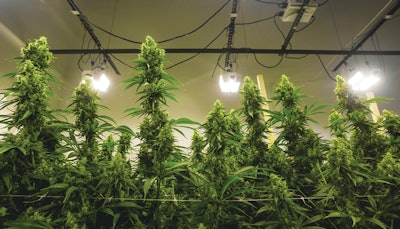
Guthrie: You can't call your product organic because of cannabis’s federal illegality. Has it been difficult to tout your methods or differentiate yourself because of this?
Billings: Absolutely. Although the regulatory framework allows for some freedom in marketing, it is in a very limiting way, especially in Boulder, where we are. The fact that this is still a federally illegal product taints the ability to express our methods and care in a way that could drive attention and sales. Although we only use organic practices when it comes to our integrated pest management, it's a challenge to explain what we do in a digestible way. Other industries just say they're organic, and the consumer base understands at a certain level what that means. Other producers could use a multitude of other techniques and potentially harmful chemicals, and our marketing could appear very similar.
The Farm has continuously provided clean, safe cannabis for Boulder for the last nine years. We have always tried to stay true to our culture, and we plan to continue that tradition by finding creative ways to educate and share that with the public.











